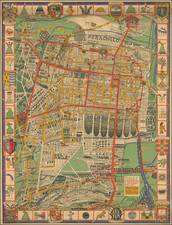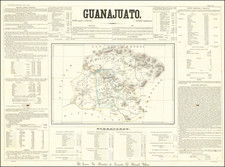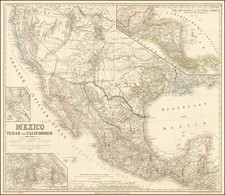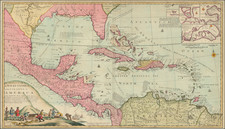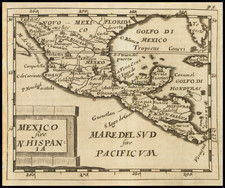Watercolor after the Codex Dresden
A visually stunning early 19th-century watercolor by Captain William H. Shippard, after the Codex Dresden. Shippard's extensive note on the sheet itself clarifies that he copied the image from a color lithograph plate in Lord Kingsborough's Mexican Antiquities. The watercolor is signed and dated by Shippard: 15 Oct. 1834.
Notably, Shippard has ventured to interpret the images based on his knowledge and observations of Mexican codices:
Facsimiles from pages 59-50 and 51 of an Original Mexican Hieroglyphic Painting preserved in the Royal Library at Dresden (Saxony) the original that has 74 pages corresponding in size and form to these. These are taken from Lord Kingsborough's and Aglio's Mexican Antiquities Vol. 3rd. Boettiger says this Azteck Ms. was purchased at Vienna in 1739 by Gotze Librarian of the Royal Dresden Library.
No explanation or translation has hitherto been found or furnished of this Ms. according to de Humboldt. I consider the Painted figures to represent Mexican Gods with their warrior attributes as they resemble other figures on a larger scale of gods in the Mexican Paintings. I consider the other figures to be a more advanced species of writing than any Mexican Ms. I have seen. They are unlike all except the Sculptures found at Palenque by Dupaix. They are also much smaller and more crowded. W. H. Shippard.
William Henry Shippard's Mexican Paintings
William H. Shippard (1803-1865) was a pioneering 19th-century British museologist - an unsung progenitor of modern-day museum anthropology. While he is chiefly remembered as a friend of George Catlin, Shippard's profound interest in the ancient civilizations of Mexico connects him with a cohort of British contemporaries that include Lord Kingsborough and the showman William Bullock. Shippard's fascination with Mesoamerica propelled him to amass a significant collection of visual material derived from Aztec codices which he copied himself. A figure of some intrigue and scholarly ambition, Shippard endeavored to establish the Museum of Mankind in London, which seems to have evolved from his deep interest in early Mexican cultures. Although the museum did not come to fruition, Shippard's original artwork, mainly pen and ink drawings enriched with vibrant hand coloring, based on Mexican codices held in European libraries and collections, remains a valuable historical source, particularly for understanding the allure of Mexican antiquity within early 19th-century British collecting circles.
Capt. William H. Shippard, a friend of George Catlin and an avid watercolorist and museologist, was also a pioneering British Mesoamericanist. Shippard appears in British newspaper notices from the 1840s as a London-based lecturer who spoke about Native Americans and Mexican antiquities. We know he was a friend of George Catlin, and that he was involved in attempts to organize early London museum exhibitions of Mexican antiquities. In the latter efforts Shippard would seem to coincide with a group of like minded prominent English collectors interested in Mexican topics active during the 1820s and 1830s, including Lord Kingsborough and the bibliomaniac Sir Thomas Phillipps, among others. He seems to have been an armchair anthropologist and would-be museum founder, whose ambitious ideas for a London-based museum never got off the ground - at least not beyond the prospectus-printing stage. Certain aspects of Shippard's career are akin to William Bullock, the showman and connoisseur of Mexican antiquities who actually did travel to Mexico. Bullock published a notable book about his Mexican travels, and achieved a level of recognition in his day as the empresario of London's Egyptian Hall, wherein he thrilled large London audiences with his elaborate exhibitions of exotica, including Mexican items.









![Mapa et tierra q[u]e yos pedro Vial taigo transitau en St. Tafee este dia 18 de Octubre de La ao 1787](https://storage.googleapis.com/raremaps/img/small/3645.jpg)
